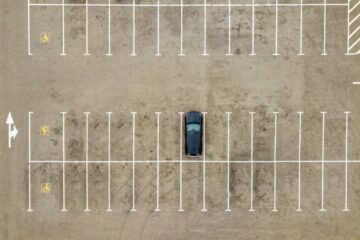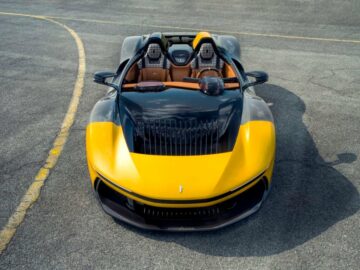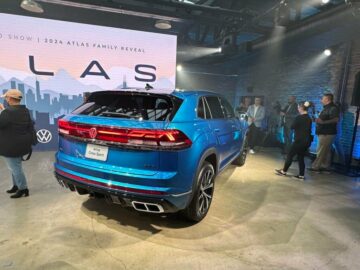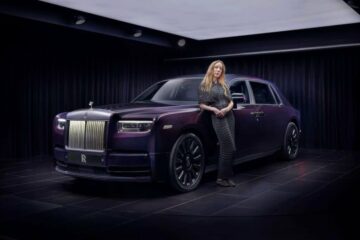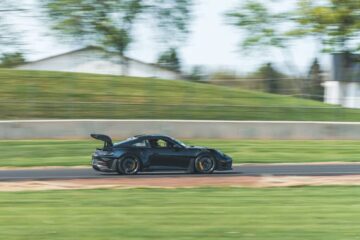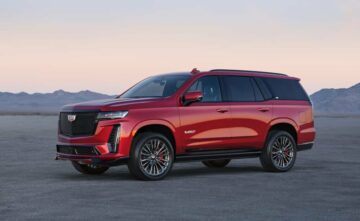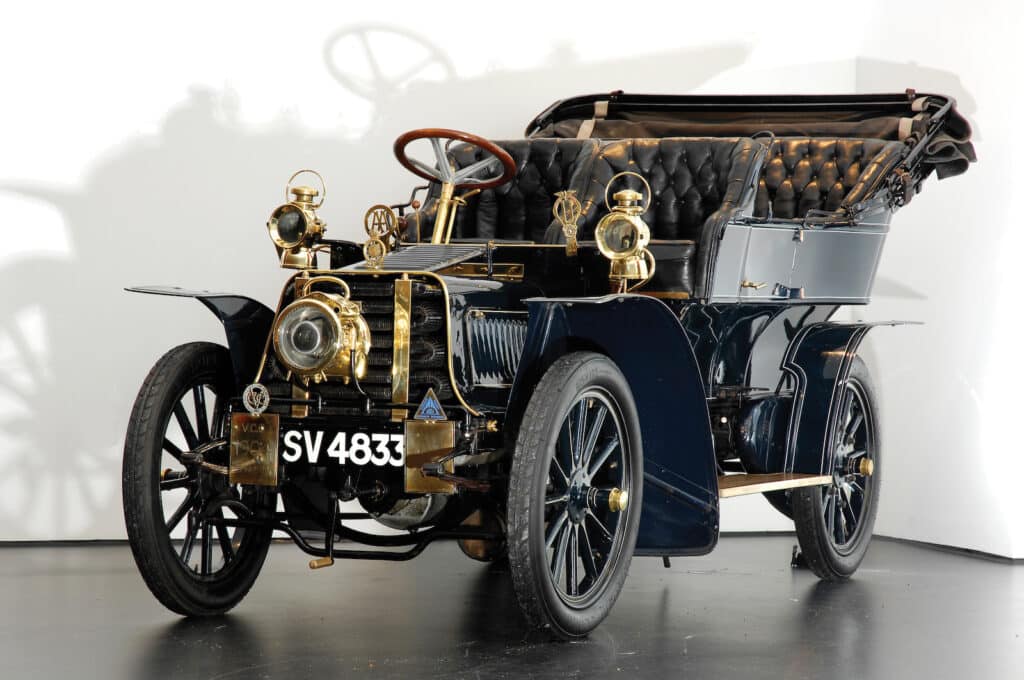
If you wanted a sports car in the 1960s, odds are it was built in Great Britain. And one of the mots legendary began production this week in 1964: The Sunbeam Tiger, built by the Rootes Group and sporting a Ford V8 stuffed under its bonnet — not unlike the Shelby Cobra, which started its life as the AC Ace.
Yet the Sunbeam Tiger was no poor man’s Cobra.
What is the Rootes Group?
The Sunbeam Tiger was the creation of British automaker Sunbeam, which by the 1960s was part of the Rootes Group. The company got its start in 1914, when William Rootes began selling Belleville, Briton, Delauney, Ford, Hillman, Humber, Morris, Singer, Sunbeam and Wolseley cars in addition to the bicycles he had been hawking at his store in Kent. William’s sons, William Jr., known as Billy, and Reginald went on to establish their own vehicle distributorship, Rootes Ltd., which it remained until 1925, when the Rootes brothers purchased coachbuilder Thrupp and Maberley, building bespoke bodies for such top British automakers as Rolls-Royce and Daimler.

Buy now, it was obvious that the Rootes brothers wanted to be more than merely distributors and dealers, and it was only a matter of time before they would acquire a manufacturer.
In 1928, in a market dominated by automaker Morris, which was selling more than 60,000 units annually, fellow automakers Hillman and Humber were barely producing 5,000 units a year and struggling to survive. Rootes would acquire both by 1928. Within four years, the company produce the Hillman Minx, which proved popular enough to last four decades and ensuring Rootes’ success.
In 1934, the final piece of the Rootes Group puzzle came together with the acquisition of Sunbeam-Talbot-Darracq.
Sunbeam rises

John Marston had registered the Sunbeam name for his British bicycle manufacturing company in the West Midlands in 1888. The first Sunbeam automobiles were built in 1901. Yet Marston sought to separate his newfound automobile company business from his bicycle business.
So, the automobile business was sold to the newly formed Sunbeam Motor Car Co. Ltd., in 1905. Business was initially strong, as Sunbeam engines were used in Grand Prix racing, while its aircraft engines were also highly sought after.
In 1920, Sunbeam joined with automakers Talbot and Darracq to form STD Motors Ltd.
Looking to expand its grand prix program, Sunbeam borrowed heavily to finance it in 1924. The marque would go on to set five land speed records in 1927. Such accomplishments did little to stoke STD Motors’ sales, as a prolonged sales slump led the company to enter receivership in 1934, when it was acquired by the Rootes Group. Four years later, a new company was formed, Sunbeam-Talbot Ltd., selling a variant of the Hillman Minx as the Sunbeam-Talbot Ten, while the Hillman 14 became the Sunbeam-Talbot 2-Liter. They would be replaced by the 80 and 90 in 1949, with the latter providing the basis for the two-seat Sunbeam Alpine roadster, which debuted in 1953.
Sunbeam’s sports car

The 1953 Sunbeam Alpine arrived wearing a formal vertical grille and louvered hood, and powered by a 2.3-liter four-cylinder engine that produced 77 horsepower. It’s leather-lined cabin provided space for two, while its doors lacked exterior door handles. Being a roadster, snap-inside curtains came standard. Options included a plastic racing windshield, performance kits for racing, heater, radio, cockpit cover, tachometer, side mirror and windshield washer. Production would continue through 1955, with power reaching 90 before its run ceased.
A completely new Alpine arrived for 1960, based on the Hillman Husky station wagon chassis. Designed by Barney Roos under the auspices of the Raymond Loewy, the new Alpine looked like a 1957 Ford Thunderbird that had been left in the dryer too long. But it was engineered for performance, with a wishbone front suspension, a solid rear axle, and Girling front disc and rear drum brakes. Power came from a 1.5-liter 4-cylinder that produced 83.5 horsepower, rising to 97 horsepower by 1963, when its engine grew to 1.6 liters.
But competitors offered more power for far less money. Clearly, the Alpine needed more power, but the Rootes Group wasn’t in a position to engineer a new high-performance engine for such a low-volume sports car.
A Tiger is born

The template for what Rootes would do was established by AC Cars, which had worked with American racecar driver Carroll Shelby to stuff Ford Motor Company’s 164-horsepower 4.3-liter V-8 under the bonnet of an AC Ace, transforming it into the Shelby Cobra.
Sunbeam’s West Coast Sales Manager lived near Shelby American, and broached Carroll Shelby about working similar magic on the Sunbeam Alpine. For $10,000, Shelby proposed using Ford’s 4.3-liter V-8 in the Alpine as well, a project that would take about 10 weeks.
“At that price, when can we start?” Brian Rootes, son of Billy, asked, a conversation recounted in “Sunbeam Alpine and Tiger: The Complete Story” by Graham Robson. “But for God’s sake, keep it quiet from Dad until you hear from me.”
Shelby produced a prototype dubbed the Thunderbolt, using the Ford V-8 and a 4-speed manual transmission.

When Lord Rootes found out about the car, he was none too happy – until he drove it. That’s when he placed an order for 3,000 Ford 4.3-liter V-8s, ordering the car be readied for its debut at the 1964 New York Auto Show. But Shelby’s agreement with AC Cars, Shelby wouldn’t be building the car, now dubbed the Tiger. Instead, he’d get a percentage on the sale of each car built.
The Tiger’s V-8 used a two-barrel carburetor, but a two-barrel carburetor, but an Edelbrock intake, and a Holley four-barrel carburetor could be ordered, as could a Dana 44 rear differential. Prices started at $2,898.
The engine was upgraded when the Sunbeam Tiger Mk II arrived in 1966 to Fords 4.7-liter V-8, allowing for a 7.5-second 0-60 mph run, very fast for its day. Top speed was 122 mph.
Changing times
But by the time the Sunbeam Alpine Mk II appeared, the Rootes Group was in the process of being acquired by Chrysler Corporation.

Chrysler first invested in Rootes Group in 1964, spending $35 million in return for 30% of ordinary voting shares and 50% of class A non‐voting ordinary shares of the British company. The company needed the cash infusion, having run into trouble in developing the Hillman Imp.
The small car was created in response to the Suez Crisis of 1956, which saw the Suez Canal close from October 1956 until March 1957. But the car’s development ran behind schedule and went over budget. This, as well as a three-month strike by Rootes’ British Light Steel Pressing Company strained company finances, allowing the Ford Anglia, BMC Mini and other small cars to lock up the market prior to the Imp’s arrival for 1963.
When it arrived, the Imp proved unusual, with a longitudinal, rear-mounted, water-cooled four cylinder engine, it never proved anywhere near as popular as its competitors, plunging Rootes into the red. This led Lord Rootes, then 69, to seek the aid of Chrysler, which would eventually end up owning all of the Rootes Group by 1967.
At first, Sunbeam boasted the Alpine was “Powered by Ford.” But as Chrysler’s investment increased, that changed to “an American V-8 powertrain.” Chrysler’s own V-8s were too large to fit under the Alpine’s hood, to Chrysler was forced to buy the Tiger’s V-8 engines from Ford. Once Chrysler owned all of Rootes Group, it ended production of the Tiger and any of its planned updates.
Sunbeam survived until 1976, after which all Rootes Group cars were badged as Chryslers.
- SEO Powered Content & PR Distribution. Get Amplified Today.
- PlatoData.Network Vertical Generative Ai. Empower Yourself. Access Here.
- PlatoAiStream. Web3 Intelligence. Knowledge Amplified. Access Here.
- PlatoESG. Automotive / EVs, Carbon, CleanTech, Energy, Environment, Solar, Waste Management. Access Here.
- BlockOffsets. Modernizing Environmental Offset Ownership. Access Here.
- Source: https://www.thedetroitbureau.com/2023/07/the-rearview-mirror-the-poor-mans-cobra/
- :is
- :not
- $UP
- 000
- 1
- 10
- 12
- 14
- 1934
- 1949
- 60
- 7
- 77
- 80
- 90
- a
- About
- AC
- accomplishments
- ace
- acquire
- acquired
- acquisition
- addition
- After
- Agreement
- Aid
- aircraft
- All
- Allowing
- also
- American
- an
- and
- Annually
- any
- anywhere
- appeared
- ARE
- arrival
- AS
- asked
- At
- auto
- automakers
- automobile
- automobiles
- based
- basis
- BE
- became
- been
- before
- began
- behind
- being
- bespoke
- bicycles
- BMC
- bodies
- borrowed
- both
- Brian
- britain
- British
- brothers
- budget
- Building
- built
- Bureau
- business
- but
- buy
- by
- came
- CAN
- car
- cars
- Cash
- changed
- chassis
- chrysler
- circles
- class
- classic
- clearly
- Close
- CO
- Coast
- Cockpit
- company
- Company’s
- competitors
- complete
- completely
- continue
- Conversation
- CORPORATION
- could
- cover
- created
- creation
- credit
- crisis
- Dad
- Daimler
- Dana
- day
- debut
- debuted
- decades
- designed
- developing
- Development
- DID
- distributors
- do
- Door
- doors
- driver
- dryer
- dubbed
- each
- end
- Engine
- engineer
- Engines
- enough
- ensuring
- Enter
- establish
- established
- eventually
- Expand
- far
- FAST
- fellow
- final
- finance
- Finances
- First
- fit
- five
- For
- forced
- Ford
- form
- formal
- formed
- found
- four
- from
- front
- get
- Go
- great
- Great Britain
- Group
- had
- Handles
- happy
- having
- he
- hear
- heavily
- high-performance
- highly
- his
- hood
- HTTPS
- ii
- in
- included
- increased
- infusion
- initially
- instead
- interior
- into
- invested
- investment
- IT
- ITS
- joined
- jpg
- Keep
- known
- Land
- large
- Last
- later
- Led
- left
- legendary
- less
- Life
- light
- like
- little
- Long
- looked
- Ltd
- magic
- manager
- manual
- Manufacturer
- manufacturing
- March
- Market
- Matter
- max-width
- me
- merely
- million
- mirror
- money
- more
- Motor
- Motors
- much
- name
- Near
- needed
- never
- New
- New York
- newly
- no
- now
- obvious
- october
- Odds
- of
- offered
- on
- once
- ONE
- only
- Options
- order
- ordinary
- Other
- out
- over
- own
- owned
- part
- percentage
- performance
- photo
- piece
- planned
- plastic
- plato
- Plato Data Intelligence
- PlatoData
- plunging
- poor
- Popular
- position
- power
- powered
- pressing
- price
- Prices
- Prior
- process
- produce
- Produced
- producing
- Production
- Program
- project
- proposed
- prototype
- proved
- provided
- providing
- purchased
- puzzle
- racing
- Radio
- reaching
- records
- Red
- registered
- remained
- replaced
- response
- return
- rising
- Rolls-Royce
- Run
- sake
- sale
- sales
- saw
- schedule
- Seek
- Selling
- separate
- set
- Shares
- show
- side
- similar
- singer
- Slump
- small
- sold
- solid
- son
- sought
- Space
- speed
- Spending
- Sports
- standard
- start
- started
- station
- steel
- store
- strike
- strong
- Struggling
- success
- such
- survive
- Survived
- suspension
- Take
- takeover
- template
- ten
- than
- that
- The
- The West
- their
- then
- they
- this
- this week
- Through
- Tiger
- time
- to
- together
- too
- top
- transforming
- trouble
- two
- under
- units
- unlike
- until
- unusual
- Updates
- upgraded
- used
- using
- Variant
- vehicle
- vertical
- very
- Voting
- wanted
- was
- we
- week
- Weeks
- WELL
- well-known
- went
- were
- West
- What
- when
- which
- while
- with
- within
- worked
- working
- would
- year
- years
- yet
- york
- you
- zephyrnet

